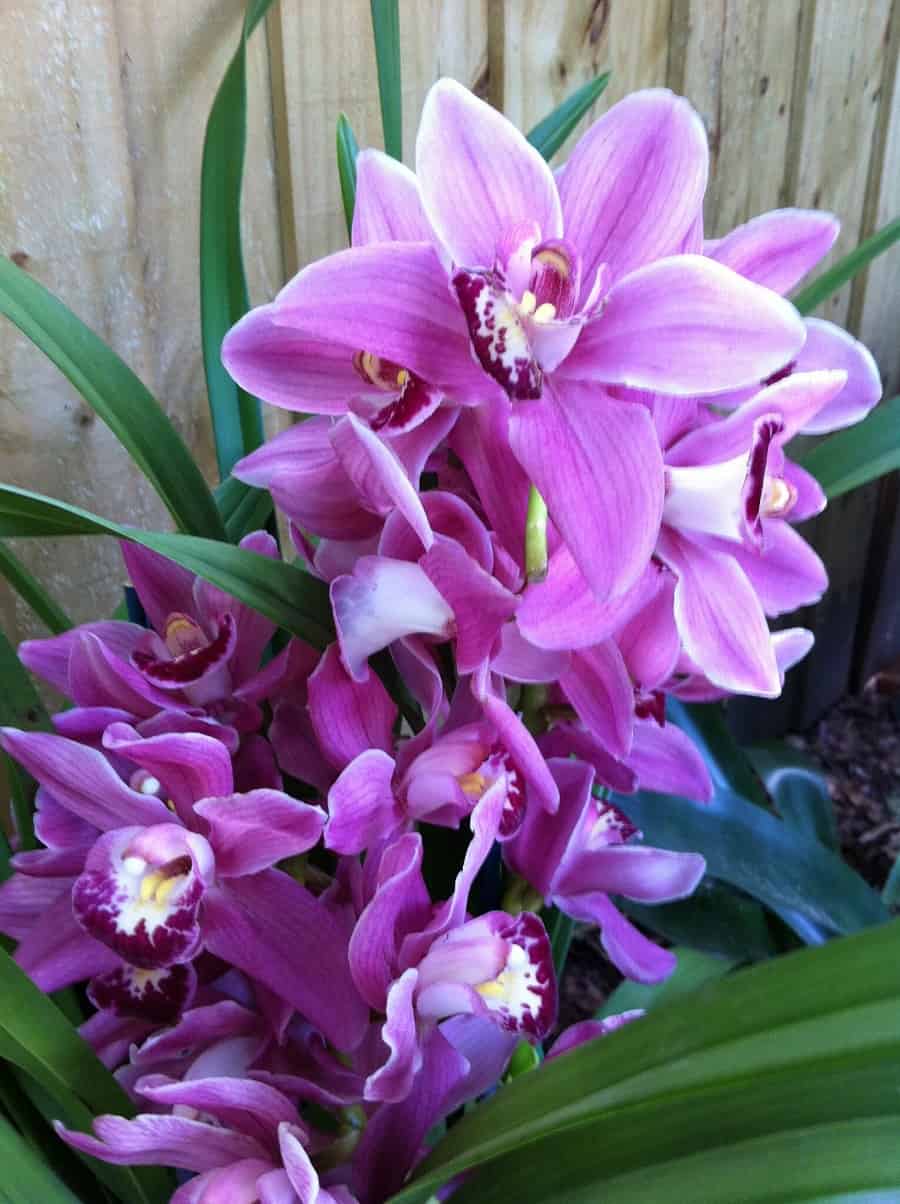You can find many orchids species around the world capable of growing indoors and outdoors.
However, some orchids are easier to grow than others, and in many cases, their planting and maintenance can be difficult.
These beautiful plants flowering lasts for many weeks, providing lasting beauty to the home.
Before getting into flower care, I’ll give you some advice that can help you in this journey.
1. Choose the variety of orchid that suits you best; remember depending on the type, they have different care.
2. Choose the right pot for your orchid; keep in mind that this flowers usually grow on stones and tree stumps.
3. Orchids can take up to 2-3 years to bloom.
4. Research the gender of your orchid, as this will help you provide the specific care.
5. Place the orchids in a place with ventilation but without a direct draft.
Having them in a ventilated place helps prevent excess humidity; it also avoids the concentration of organic gases of any kind that can affect your orchid.
You may like: How to Rebloom Orchids
How to grow orchids indoors?
Let start with the primary care to grow these plants correctly.
Illumination
As we mentioned before, there are different types of orchids and each of these has different types of care.
For example:
If you have Paphiopedilum orchids, Phalaenopsis and Oncidium are less demanding in terms of luminosity.
Whereas Cattleya, Dendrobium, and Vanda orchids require a lot of light.
If you have the genus of plants that do not require much light, you can place it in a place where it receives sunlight but never direct sunlight.
While with those that do require sunlight, you should put them on a window or balcony where it receives a few rays of sunlight a day.
One sign that your orchids are getting the right amount of sun is that their leaves have a deep dark green.
But, if you notice that the leaves are yellowish or reddish, this means that they are receiving an excess of light, so you should place it in a place where it receives less direct sunlight.
Substratum
Orchid roots need air, so to much soil is not recommended. Orchids benefit more from a looser and more porous mix.
So it is recommended to use a peat-based substrate: dry leaves, coconut tow, charcoal, moss, crushed tree bark, etc.
I’ll give you some examples of mixtures that you can use depending on the type of orchids you have:
1. The orchids Oncidium, Paphiopedilum, Oncidiinae, and, in general, for all those orchids with small roots that require more humidity you can use:
4 fine-grained parts of fir bark or coconut shell.
1 part fine-grained charcoal.
1 part of perlite.
2. Cattleya orchids, Phalaenopsis and other mature orchids:
4 parts of medium grain of fir bark or coconut shell.
1 part medium grain charcoal.
1 part of perlite.
3. Cymbidium orchids and other large orchids:
4 coarse-grained parts of fir bark or coconut shell.
1 part medium grain charcoal.
1 part of perlite.
Fertilization
Orchids should be fertilized no more than once a month; excessive fertilization can burn the roots and prevent their flowering.
During fall and winter, you can fertilize every 15 days, depending on your region’s conditions.
Just remember to use specific fertilizers for orchids, whether commercial or homemade.
When you prepare or buy fertilizer for your orchids, remember that it must have a high potassium and calcium content, since they cannot obtain these nutrients from the substrate where they are grown.
Temperature
Depending on the type of orchid you have the temperature is between 18 °C/ 64°F and 23°C/73°F during the day, with a difference of no more than 7°C/44°F compared to the night.
Watering
Generally speaking, the amount of water is the same, what varies is the frequency.
Orchids like humidity, but they are more likely to tolerate a lack of water than overwatering.
During the hottest months, try to keep the soil always moist without producing puddles.
It is not advisable to water too often in the winter, so it is best to let the substrate dry between watering and watering.
And choose a well-ventilated place to avoid excess humidity since it can cause diseases and pests.
Pests or diseases
Among the main pests and diseases that can attack your Orchids you can find:
Aphids, this pest can be treated by applying potassium or biodegradable soap on the underside of plants.
Red spider, `to eliminate it, an extract of garlic and chili can be applied.
Thrips, this pest is eliminated with a combined application of neem extract and potassium soap.
Pruning
When the flowers fall and the stem begins to turn yellow, you must prune the orchid.
To do this, you will look for possible shoots that grow on the stem and cut above the shoot.
This way, you will ensure that the plant continues to grow from that new sprout.
The stem must have leaves, as they will be the sustenance for the orchid to bloom again.
You will also remove any stem and leaves that are dry or yellowish to avoid any pest or disease formation.
